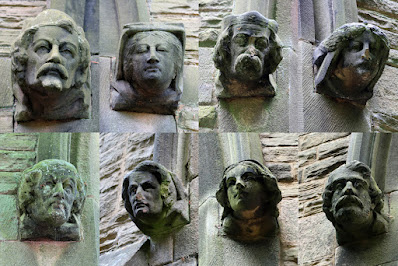When researching my day out to Eckington, principally to take photos for the British Listed Buildings website – which included the Chapel of Ease at Eckington Cemetery – I prepared a list of the Commonwealth War Graves Commission (CWGC) headstones using the Find War Dead search tool for Eckington Burial Ground.
Since encountering the headstone of Private J.W. Wornes of the Leicestershire Regiment at St. John’s church in Dronfield, back in February 2021, whenever there is a churchyard or cemetery on my travels, I have made a point of photographing these excellent examples of relief sculpture – albeit in a very random manner.
Referring also to the War Graves Photographic Project website, where the non-standard private headstones are also shown, I thought that the regimental crests that I had not seen before would be easy to find, especially since Eckington Parish Council have published a guide to the cemetery; however, when seeing the PDF map, which I could not easily transfer to a printed A4 sheet that I take on my trips, I decided to just criss-cross the cemetery as usual.
The first headstone that I encountered was that of Private A.T. Rhodes of the Royal Marine Light Infantry, made in Portland limestone. The headstone was certified as being correct and complete on 10th April 1924 and it is therefore interesting to see how much of the limestone has weathered away over a period of very nearly 100 years.
The headstone of Gunner F. Smedley of the 40th Searchlight Regiment of the Sherwood Foresters is also made of Portland limestone. Certified in 1956, a lot of the detail to the regimental crest has also been lost and weathering has left the shell fragments standing proud.
I had already seen an example of the Sherwood Foresters (Notts and Derby Regiment) crest on the headstone of Private R.R. Jackson at Woodhouse Cemetery, but this is made in a French granite, where the details of the regimental crest aren’t easy to see due to the variation in the colours of the component minerals.
The last of the regimental crests that I wanted to find was of the South Staffordshire Regiment, which is on the headstone of Warrant Officer G.R. Porteous – again made in Portland stone that has weathered to reveal shell fragments.
Having photographed the regimental crests on my list, I had a quick look for the other CWGC headstones and found all but one. Except for the replacement headstone of Private A. Pearson of the Royal Army Ordnance Corps, which is made of Botticino marble and has been engraved with a CNC machine using Alphacam software, all of these are made with Portland stone – including the renewed headstone of Corporal R. King of the Royal Field Artillery.
Stopping briefly to photograph a late Victorian headstone, where the surface has delaminated to reveal the grey body of the stone, I made my way down to the cemetery entrance and continued down the road towards Eckington.
Almost immediately, I encountered a roadside cutting where a 2 metre section of orange sandstone is exposed over a length of approximately 100 metres, which the geological map shows is an exposure of the Parkgate Rock.
Earlier on my walk, I had already seen a very small section of orange cross-bedded sandstone in the road cutting just to the south of Windmill Greenway, which was overlain by a finer sandstone with well defined planar bedding. The slope of the A6135 road approximately follows the dip of the Parkgate Rock here and it is therefore probable that this is a lateral continuation of these beds.
Although generally massive in nature, it is cross-bedded, with variable thicknesses of individual beds and, in places, it has a closely spaced pattern of jointing that affects only certain sections of the exposure. A characteristic of the Parkgate Rock is its high iron content, which can be seen as Liesegang rings and dense concentrations of iron oxides/hydroxides on the joint planes.
I obtained a specimen from a part of the exposure that consists of quite loose and friable sandstone, which is fine grained and has a strong orange colour that is probably the result of a high limonite content. Also, it contains a couple of much darker bands 2-3 mm thick, which may be coal streaks – as described at Pitsmoor on page 83 of the geological memoir.

























































